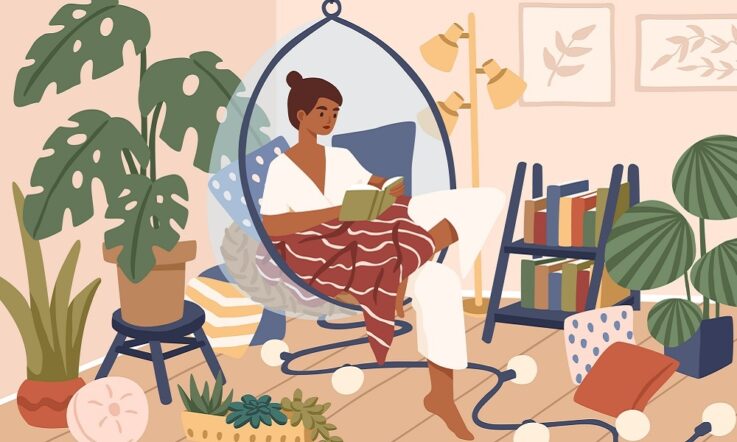Research shows that two hours of arts participation each week improves our mental wellbeing. It could involve a number of arts activities, like listening to music, reading a novel, or watching a movie. Here, Dr Christina Davies explains the research and how we can incorporate arts participation into our routines.
How do you relax and unwind when you have spare time outside of work? Do you like to listen to music, read novels, sew, paint, or perhaps watch a movie? These are just a few examples of engaging in the arts, and research shows this engagement has a positive impact on our mental wellbeing.
Dr Christina Davies, a Senior Research Fellow in the School of Allied Health at the University of Western Australia, has researched the impact arts engagement has on our wellbeing throughout her career.
In 2020, a rapid review Davies and her team prepared for VicHealth found strong evidence of a link between arts engagement and mental wellbeing. In a 2016 world first study, Davies and her team quantified the arts-mental wellbeing relationship and found adults who engaged in the arts for two or more hours per week had better mental wellbeing than those who did not engage or who took part at lower levels.
The impact of arts participation on our happiness and wellbeing
There are many ways we can engage in all kinds of arts, whether it’s visual arts, design and craft, performing arts, festivals, literature, or online and digital arts. The key is to spend time doing what we enjoy, and if you’re out of ideas, a good starting point is to pick up an arts activity you enjoyed when you were a child.
As for the specific impact two or more hours per week of arts engagement can have on our wellbeing, Davies’ research shows that arts engagement can lead to increased levels of happiness, confidence, and self-esteem, and reduced levels of stress.
‘You don’t have to spend a lot of money. Most people will already have the music they like listening to, it's just about incorporating that music into their daily lives, such as singing along to their favourite music while they're in the car,’ she tells Wellbeing by Teacher.
Challenging our perceptions and expectations of arts engagement
Through her research, Davies has observed that people can feel guilty for spending time or money being creative. However, she says we should be thinking of time spent engaged in the arts as a step towards improved mental wellbeing, just like we rightly think of time spent being physically active as a step towards improved physical health.
She also acknowledges that it’s common for people to have high expectations or to feel that if they aren’t a perfect painter or singer, they shouldn’t spend time being creative. But, as she explains, this isn’t the case at all.
‘With sport, some people like to go to the park and kick around a ball, but then they go to the football and watch the sports stars they admire… this should be the same with the arts. Do some colouring, do some painting, do some singing, it doesn't matter if you're good or not good. And then, go to a gallery and see the works of a famous painter or a concert and listen to a professional singer. … You don't have to be good at art for art to be good for you,’ Davies says.
References
Davies, C., & Pescud, M. (2020) The arts and creative industries in health promotion: an Evidence Check rapid review brokered by the Sax Institute for The Victorian Health Promotion Foundation. VicHealth. https://www.vichealth.vic.gov.au/-/media/ResourceCentre/VH_Sax-Arts-Review.pdf?la=en&hash=E2DBAAC192837E3818FA53FECD3695305D6DC337
Davies, C., Knuiman, M. & Rosenberg, M. (2016). The art of being mentally healthy: a study to quantify the relationship between recreational arts engagement and mental well-being in the general population. BMC Public Health. https://doi.org/10.1186/s12889-015-2672-7





